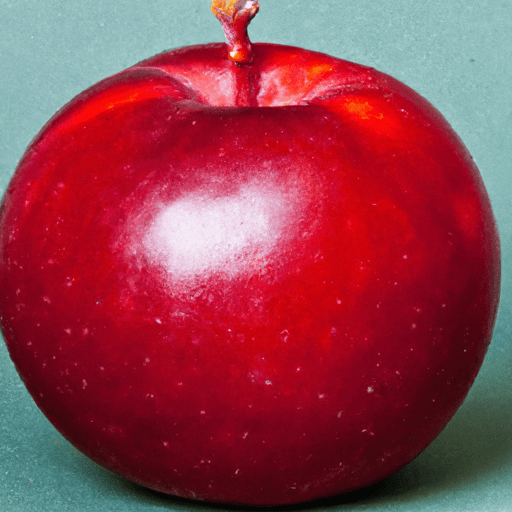The Delightful World of Tart Apples
Tart apples are not only a quintessential fruit in autumn, but they also possess a unique flavor profile that adds depth and complexity to a wide range of culinary creations. In this blog post, we’ll explore the tantalizing taste, versatile uses, impressive nutritional value, and fascinating history of these delectable fruits. So let’s dive into the juicy world of tart apples!
The Taste of Tart Apples
Tart apples, also known as “sharp” or “sour” apples, are renowned for their puckeringly acidic taste that makes your taste buds tingle. Unlike their sweeter counterparts, these apples have a refreshing tang that adds a delightful zing to dishes. The natural acidity of tart apples complements both sweet and savory combinations, making them highly versatile in the kitchen.
Common Uses in Cooking
When it comes to cooking, tart apples are an absolute culinary gem. Their distinct flavor and texture make them perfect for a variety of dishes. Here are some popular ways to incorporate tart apples into your culinary creations:
Baking: Tart apples are exceptional for baking, as their acidic nature helps balance the sweetness in pastries, pies, and cakes. From classic apple pies to rustic tarts, these apples bring a unique depth of flavor to your favorite baked goods.
Sauces and Chutneys: The tangy zest of tart apples lends itself beautifully to sauces and chutneys. Whether you’re pairing them with pork chops or incorporating them into a delightful cranberry-apple sauce, tart apples add complexity and excitement to your condiments.
Salads: Sliced or diced tart apples offer a refreshing crunch to salads, while their tangy flavor cuts through rich dressings and adds a burst of brightness. Combine them with greens, nuts, and cheese for a tantalizing salad experience.
Ciders and Beverages: Tart apples are highly sought after for making apple cider due to their robust flavor. These apples infuse ciders and beverages with a delightful tartness that perfectly balances the sweetness. Additionally, incorporating them into smoothies or juices adds a refreshing and tangy twist.
Nutritional Value
Apart from their culinary versatility, tart apples also boast an array of nutritional benefits. These fruits are a fantastic source of dietary fiber, vitamin C, and various antioxidants. Fiber aids digestion and promotes a feeling of fullness, while vitamin C boosts immune function and helps protect against cell damage. So, not only do tart apples excite your taste buds, but they also contribute positively to your overall health.
Historical Significance and Fun Facts
Tart apples have a rich historical background that spans centuries. Apples, in general, have fascinated cultures around the world for their symbolism, medicinal properties, and culinary applications. Here are a few interesting facts about tart apples:
- The Granny Smith apple, renowned for its tartness, originated in Australia in the 1860s and is named after Maria Ann “Granny” Smith, who discovered the unique variety.
- Apples have been mentioned in ancient mythology and biblical texts, often representing knowledge, temptation, and immortality.
- Johnny Appleseed, born as John Chapman in the late 18th century, was a prominent American pioneer nurseryman who planted numerous apple orchards across the United States, contributing to the spread of apples.
Final Thoughts
Tart apples are a remarkable fruit that elevates countless dishes with their invigorating taste. From pies to sauces and everything in between, their acidic profile adds a vibrant touch to culinary creations, much to the delight of food enthusiasts. So, embrace the tangy allure of tart apples and embark on a flavorful adventure in your kitchen.
Tart Apples
Origin: Tart apples are believed to have originated in Central Asia, specifically in the region of Kazakhstan. They have been cultivated for thousands of years and were then spread throughout Europe by the Romans. Later, European settlers brought these apple varieties to North America.
Common Uses: Due to their firm and acidic nature, tart apples are often used in cooking and baking. They are a popular choice for making pies, tarts, and sauces as their flavor intensifies when heated. Tart apples also work well in salads, where their crispness provides a nice contrast to other ingredients.
Nutritional Benefits: Tart apples, like other apple varieties, are a good source of dietary fiber, vitamin C, and potassium. They also contain small amounts of other vitamins and minerals, as well as antioxidants. The high fiber content can aid in digestion and help maintain healthy cholesterol levels.
Unique Properties: Tart apples are known for their acidic taste, which can range from mildly tangy to very sour. This acidity gives them a refreshing and distinct flavor that sets them apart from sweeter apple varieties. Their firm texture also makes them ideal for baking, as they hold their shape well during cooking.
Historical Significance: Apples, including tart varieties, hold significant cultural and historical importance in many societies. In ancient Greek mythology, they were associated with love and beauty. Apples also played a prominent role in Norse mythology, with the fruit symbolizing youthfulness and rejuvenation. Additionally, tart apples were highly valued by European settlers in America, as they were versatile for cooking, could be stored over winter, and became a staple in apple-based recipes.




Use the share button below if you liked it.
It makes me smile, when I see it.